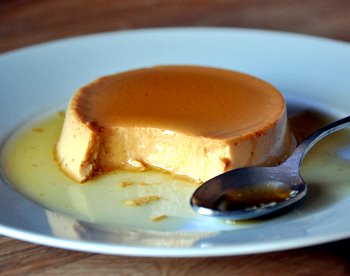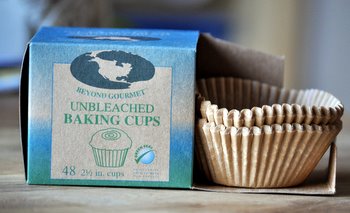
Many baking recipes call for milk as one of the main ingredients. Many recipes will call for a specific type of milk – whole milk, low fat, skim – and others will simply call for it without specifying the fat content. This brings a couple of questions to the surface: what is the difference between whole milk and skim milk, and does it matter what you use when it comes to baking?
The difference between whole and skim milk is the fat content. Whole milk generally contains about 3.5% fat, while skim contains none. All liquids in baked goods help to bind things together – even if you add water to a recipe – but fat plays an even more important roll and acts as a tenderizer and moisturizer. This means that cakes and muffins with slightly more fat in them tend to have a finer crumb and not be quite as dry when they have a little more fat in them. In professional bakeries, whole milk is the standard for baked goods and most recipes for home bakers – unless otherwise specified – tend to assume that you will be using whole milk. You can substitute low fat or skim milk in just about any recipe that calls for milk, but because the recipe was probably designed to work with a little more fat in it, you should mix carefully so that your product doesn’t become tough from overmixing.
I typically use low fat milk when I bake because that is what I keep in my kitchen on a regular basis. I tend to note in recipes when I think using a different type of milk will be beneficial. I prefer to use whole milk in ice creams and custards when possible because that small amount of extra fat in the milk contributes to a much richer mouthfeel in the end. In cakes, muffins and other baked goods, you should have results that are very, very similar regardless of what type of milk you use.






Linda
January 27, 2011I tend to use half-n-half in most recipes because I don’t drink milk and have it as a “between”. If the recipe seems a little thick, I add a little water to balance. Not sure if that is right or not but it works well. In a crunch I’ve used whole evaporated milk and cut it with some water. I agree the higher fat content seems to work better in my recipes.
Lauren at KeepItSweet
January 27, 2011Great info. I generally use fat free milk since I have it in hand, but not if it is a major component of the recipe.
Marisa@make happy
January 27, 2011I think about this every time I use our fat-free milk in a recipe. Thanks for making me feel better about it! 🙂
Catherine
January 27, 2011Thank you so much! I always use skim just because that’s what I have, & always wonder about it. Thanks for this!
The Food Hunter
January 27, 2011I tend to use skim because it’s in the house…unless the recipe specifically calls for whole milk.
Andrea
January 28, 2011And for those who have milk allergies? How does a recipe react to soy milk?
Honey
January 28, 2011very informative article. yours was one of the first blogs I actually started following and fell in love with it. I love how you try to reduce the fat, even if you don’t, your fat amounts aren’t as crazy as some other people out there. I love it!
Randy
May 23, 2012What’s interesting is using “grandma’s” recipes. Whole milk before the 1970s was closer to 5% fat and it makes a big difference in those old recipes. I have to add a bit of half/half to make up the difference. Just like with chicken soup where chickens today have less than half the flavor when boiling down so we must compensate to some degree. Milk works the same way.
Mark
December 18, 2013This was helpful. We accidentally used two percent on a custard recipe and freaked out…but all is well. Thanks again!
Heather
December 9, 2017This is helpful. I also tend to use low-fat because that’s what I have in the house. On occasion, if I think the additional fat will make a big difference, I add a little unsalted butter.